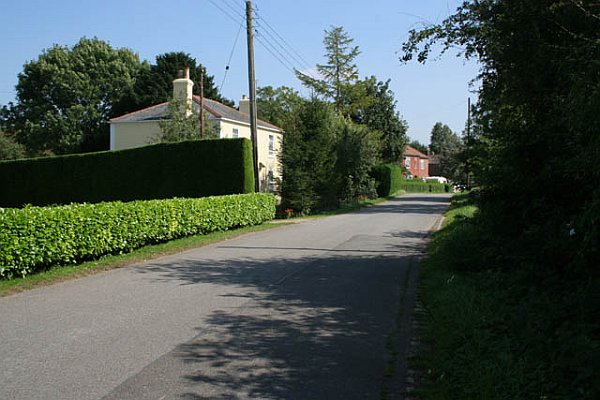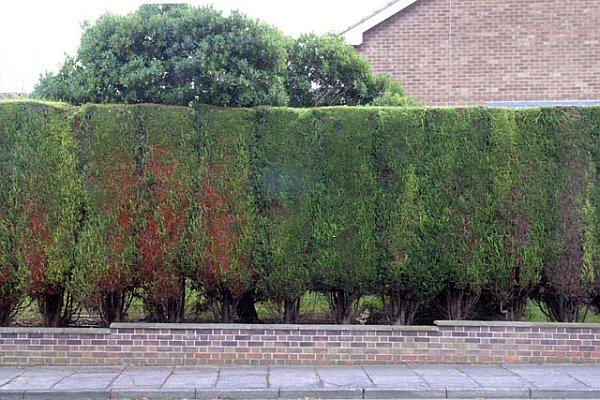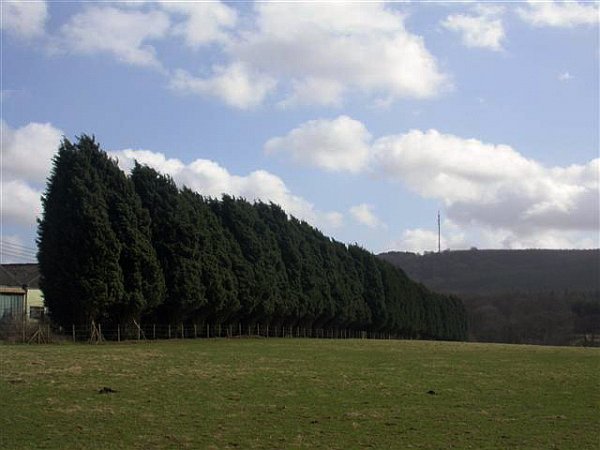
The tall square hedge in this photo is the species that launched 17,000 complaints. It’s also been blamed for the decline of the house sparrow in the UK.
When a tree is implicated in the decline of a bird I’m compelled to find out why.
Leyland cypresses (Leylandii) are an accidental hybrid of Nootka and Monterey cypresses, both from the Pacific Northwest. They hybridized on their own in the Leighton Hall gardens in northern Wales and were discovered in 1888. The hybrid is sterile but can be propagated by cuttings. It became popular in UK landscaping because the foliage is so thick it provides privacy from neighbors.
Leylandii are huge trees that grow three feet per year and can reach 130 feet tall. However, they’re used as hedges and therein lies the problem.
When people planted them as cute little shrubs, they thought their Leylandii might look like this.

But this tidiness requires constant trimming. Without it the hedgerow turns into this…

…and can engulf nearby buildings.
For instance, Snarestone Pumping Station was visible from the road in 1994 before Leylandii were planted at the perimeter. By 2010 only the top of the smokestack can be seen above the trees. (Notice the little red car at the right side of the right hand photo. These trees are huge!)

Leylandii block views and create very dense shade. Neighbors ask owners to trim them. Then the fights begin.
By 2005 there were 17,000 disputes, prompting Parliament to pass an “anti-social” law to settle them. When neighbors object to Leylandii they must first try to settle the dispute privately. If this fails they can ask local Council to intervene and pay a fee to begin. Council can rule that the trees be trimmed to 2 meters (6 feet). Failure to comply can result in a £1000 fine.
Here’s an example of a dispute in Plymouth, complete with a video that shows the neighborhood. The trees completely obscure the owner’s house. Interestingly, the neighborhood has no other trees and no plantings for birds.
How do house sparrows figure into this? House sparrow population studies have shown they thrive where there are deciduous trees, not evergreens. House sparrows are declining in the U.K. Leylandii are oppressive evergreens. Voilà!
(photos from Wikimedia Commons. Click on the captions to see the originals)